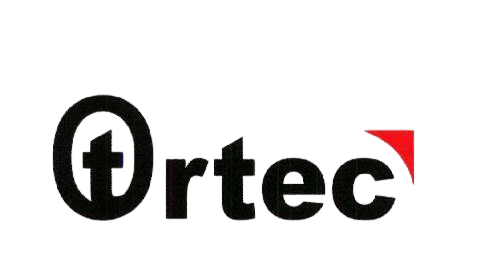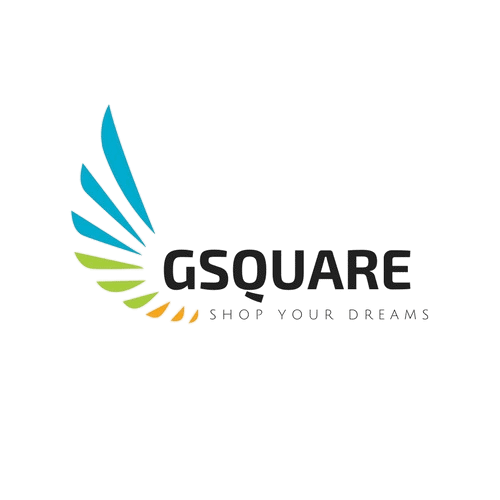
Table of Contents
ToggleDesign Registration
Our design registration service protects the unique visual elements of your products, such as shape, pattern, or ornamentation, from unauthorized use. We handle the entire process, ensuring legal compliance and safeguarding your intellectual property, giving your business a competitive edge.
More than 300 trademarks successfully registered















Over 2,000 currently in progress....

Trusted by more than
1000+ clients

Definition of a Design
A design is defined under Section 2(d) of the Designs Act 2001, as only the features of a shape, pattern, configuration, composition or ornament of lines or colours that are applied to any article that is two dimensional, three dimensional, or both by an industrial process or any means whether mechanical, manual or chemical, separated or combined, which in the finished article are judged solely by the eye; but is not taken into account upon the principle of construction or anything which is in substance a mere mechanical device.
Importance of Design Registration in India
- Design owners can grant licenses to third parties for their creations if they register them with a certain patent authority. Within the confines of their patent jurisdiction, they can benefit from the hefty royalties paid by the licensee company.
- By being registered with a patent authority, a design’s commercial worth and product marketability are both increased. It’s because a product’s unique design enhances its reputation among prospective buyers.
- An owner of a design has the right to file a lawsuit against anyone who replicates it when it is officially registered. By keeping their design or product exclusive, it guarantees that the design owner can keep their market share.
- One of the biggest advantages of design registration is that it provides legal protection against infringement. This process prevents other businesses from manufacturing, selling, or distributing products that are exact replicas of the original concept.
- More broadly, the competitiveness of market participants is increased when multiple creators register their designs. It drives research and development (R&D) projects, which in turn spur more innovation and produce win-win results for companies and product consumers.
Documents Required for Design Registration
To register a design, the following documentation needs to be sent:
- The original document or certified copies of each disclaimer, duly certified.
- Every affidavit.
- Every declaration.
- Any additional public papers can be made available on payment of a fee.
The proper format for submitting the affidavit must be followed. The controller sets the price for the design registration process.
- Use a 200 rupee non-judicial stamp paper validly signed by the controlling partners or owners of the business (form 21 for advocates and agents; a general power of attorney is necessary otherwise) to register.
- Four copies of the design were printed.
- You have to provide drawings, photos, or tracings of the design.
- Paper of A4 size must be utilized, and usage and priority documentation must be included in the design.
The 2014 Design (Amendment) Rules created two application categories:
- Individuals, and
- non- Individuals.
The various fee schedules that are applicable to candidates based on their classification. The reduced application fees for design registration are advantageous to small businesses. The owner of a design certificate is legally able to forbid others from utilizing the design without that owner’s consent.
If a third party uses the design without giving the owner notice, the owner may file a lawsuit to recover damages from the infringer. As a result, he is entitled to compensation for any infringement of his rights over design usage.
Essentials Requirements for Design Registration
In order for a design to be eligible for registration and protection under the Design Act of 2000, certain prerequisites must be met:
- A design ought to be fresh and original. This indicates that prior to the date of the registration application, it should not have been used or publicized in any other country.
- A design ought to be distinctly different from existing designs or from a combination of existing designs.
- Sensational or offensive content should not be included in or contained in a design
- A design shouldn’t be limited to a mechanical device.
- An article should have a visually appealing design applied to it.
- A design shouldn’t go against morality or public order.
Eligibility Criteria for Design Registration
The eligibility criteria for design registration in India are as follows:
-
Novelty: The design must be new or original, not previously published or publicly disclosed in any form in India or abroad.
-
Distinctiveness: The design should significantly differ from existing designs or combinations of known designs, exhibiting unique visual features.
-
Applicability: The design must be applicable to an article, i.e., it should be capable of being applied to an article to enhance its visual appearance.
-
Non-Obviousness: The design should not be obvious to a person skilled in the relevant field of design, meaning it should not be a mere combination of known designs or variations thereof.
-
Exclusions: Designs that are solely functional, dictated by technical requirements, or contrary to public order or morality are not eligible for registration.
-
Proper Representation: The design must be represented clearly and accurately through visual representations or drawings, showing its features, dimensions, and proportions.
Meeting these criteria ensures that the design is eligible for registration under the Designs Act, 2000, and qualifies for legal protection against unauthorized use or imitation.
Validity of Design registration
The validity of design registration initially extends for a period of ten years from the date of registration. However, it can be renewed for an additional period of five years upon application to the Design Office and payment of the prescribed renewal fee. Therefore, the total validity of design registration in India can be extended up to fifteen years from the date of registration, subject to the timely renewal process. This ensures that the owner maintains exclusive rights over the registered design and prevents unauthorized use by others for commercial purposes.
Who can Apply for Design Registration?
- Any individual, legal representation, or assignee may submit a separate or joint registration application.
- A firm, partnership, minor entity, and body corporate are all included in the definition of “person.”
- An NRI’s agent or legal representative must start the India Design Registration procedure on their behalf.
Basic Requirements of Design Registration
The basic requirements for design registration in India include:
- New and Original: Your design must be fresh, not seen before, ensuring it’s truly unique.
- Distinctive Look: It should have noticeable differences from existing designs, making it easily distinguishable.
- Useful Design: Ensure your design enhances a product’s visual appeal, serving a practical purpose.
- Clear Drawings: Provide precise, detailed illustrations showcasing every aspect of your design accurately.
- Your Details: Include your personal information such as name, address, and nationality for identification purposes.
- Priority Claim: If you’ve submitted this design elsewhere first, provide evidence to support your claim.
- Fee Payment: Complete the required fee payment to initiate the registration process smoothly.
Complete Process for Design Registration in India.
The first point to be noted is that the application for design registration can be applied to five different authorities:
- Controller Designs Patent Office in Kolkata
- Patent Office in Delhi
- Patent Office in Ahmadabad
- Patent Office in Mumbai
- Patent Office in Chennai
Whenever an application is submitted to any one of the four offices in Delhi, Mumbai, Chennai, and Ahmadabad and is rerouted to Kolkata’s head office, the following is the application procedure for filing of the design registration:
- In Form-1 the application must be filed along with the following necessary papers:
a) Name of the Applicant
b) Address of the applicant - Nationality of the Applicant
a) The applicant is not a natural person. For example, a company, the information regarding the place of incorporation, and the legal status of the entity must be included.
b) The required application fee. - The article’s Locarno Classification class and subclass that best represent the design.
- The article name that the design is intended for.
- Illustration of the layout: Two copies of the plan must be submitted if the design is two dimensional. The applicant must additionally emphasize the special qualities of the design that set it apart from other models already in use.
- Every level of registration requires a separate application in the event that one is submitted to register the design in more than one class.
- Regarding the mechanical processes, numbers, trademarks, letters, etc., each depiction must have a statement of disclaimer or uniqueness connected to it. Additionally, on each representation, it must be endorsed, properly signed, and dated by the applicant or an authorized representative acting on their behalf.
- The patent office reviews the application following submission and, if any objections are found, raises them. The patent office must award the design a copyright certificate after all objections have been resolved.
- After the date of registration, the design registration is valid for ten years.
- Before the first 10 years of the registration period expires, it is possible to extend it by an additional five years by filing an application using Form-3 and paying a fee of Rs. 2000.
Cancellation of Design Registration
A registered design’s cancellation procedure may take a long time and differ depending on a number of circumstances.
While there are several benefits to registering an industrial design, the primary advantage of canceling a registered design is that it provides protection from third-party copying. On the other hand, the Registered Owner or Registered Proprietor cancels the design registration in order to prevent legal action in the event that the owner breaches any design licensing or assignment agreements. Additionally, there is no restriction on the quantity of registered designs that can be canceled by a single application, in the same way as there is no restriction on the number of designs that can be registered concurrently or separately.
Benefits of Design Registration in India
The following is an explanation of the advantages of design registration:
- Any item or decoration that has a well-designed appearance is both appealing and attractive. As so, it raises the product’s marketability while also augmenting its commercial value.
- The owner of a protected design has the right to bring legal action against any individual or company that duplicates or mimics the design. This guarantees that the product’s design is genuine, unique, and owner-protected.
- The picture or diagrammatic depiction of a product or its packaging is protected by design registration. Many businesses rely on copyright and make sure they are adequately covered. If there is a dispute, the opposing party must provide similar evidence to support their position regarding copyright. Therefore, one could consider a design registration to be the ideal substitute for demonstrating the legitimacy of the rights.
- Every time a designer incorporates an original and imaginative element into a product, the design gains distinct personality. The market approach of uniqueness enables it carve out a niche for itself among all the other products that are currently on the market.
Why need a design registration
Design registration in India is crucial for several reasons:
-
Legal Protection: It grants exclusive rights to the owner, preventing others from using or copying the design without permission.
-
Commercial Value: Registered designs can be commercialized through licensing or sale, generating revenue for the owner.
-
Brand Identity: Unique designs enhance brand identity and market differentiation, attracting customers and building brand loyalty.
-
Market Advantage: Design registration provides a competitive edge in the market, safeguarding against imitation by competitors.
-
Enforcement: It enables the owner to enforce their rights through legal action against infringers, protecting their investment in design development.
-
Global Recognition: Registration facilitates international protection through treaties and agreements, enhancing market access and competitiveness.
Overall, design registration is essential for protecting intellectual property, fostering innovation, and driving business growth in India’s dynamic market landscape.
How to renew design registration?
According to Section 11 of the Design Act of 2000, the registered proprietor of a design shall have a copyright in the design for a term of ten years from the date of design registration. The provisions pertaining to the extension or renewal of the Design Act, 2000’s copyright are outlined in Section 11(2). A registered design’s copyright may be renewed or extended for a maximum of five years. Only after the initial ten years of the Design Registration have passed may a renewal be completed. As soon as the registered proprietor satisfies all conditions, the Controller renews the design.
Design Registration Fees in India
To register an industrial design / design patent in India, the applicant must submit an application to the office of the Controller General of Patents, Designs, and Trademarks. A description of the design and an assertion of originality and uniqueness should be included in the application. Before the filing date, the design must be original and cannot have been published or utilized in India. For small and big organizations, the official filing fees for an industrial design registration application are ₹ 1,000 and ₹ 4,000, respectively. An average of three to twelve months pass between the filing date and the registration decision.
Why Mybrandname ?

Frequently asked questions
Design applications can be submitted filed physically to the Controller General of Patents or filed online through the e-filing gateway available at the official website. https://online.ipindia.gov.in/eDesign/goForLogin/doLogin
Normally, designs of artistic nature like painting, sculptures and the like which are not produced in bulk by any industrial process is excluded from registration under the Act. The features of the design in the finished article should appeal to and are judged solely by the eye.



Experience a hassle free filing process as our expert lawyers guide you step by step
Let our expert lawyers guide you through a hassle-free filing process, ensuring each step is simple and stress-free for you. Mybrandname has over 70+ licensed lawyers. Consult Now!
Our Other Services
With our registration service, navigating the complexities of legal documentation becomes effortless. Whether you’re establishing a new business entity, securing intellectual property rights, or ensuring compliance with regulatory requirements, our experienced team is here to guide you every step of the way.
Get Answers to All Your Questions You Might Have
We will answer any questions you may have about our online sales.







